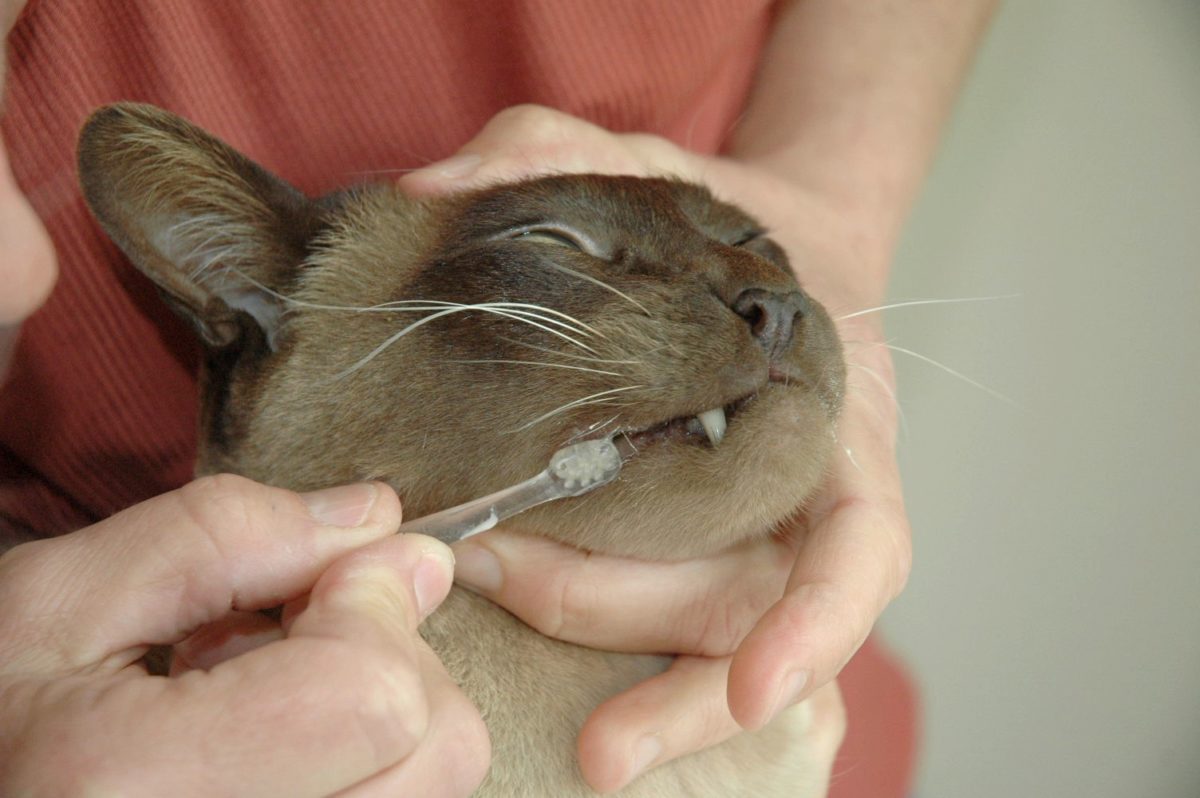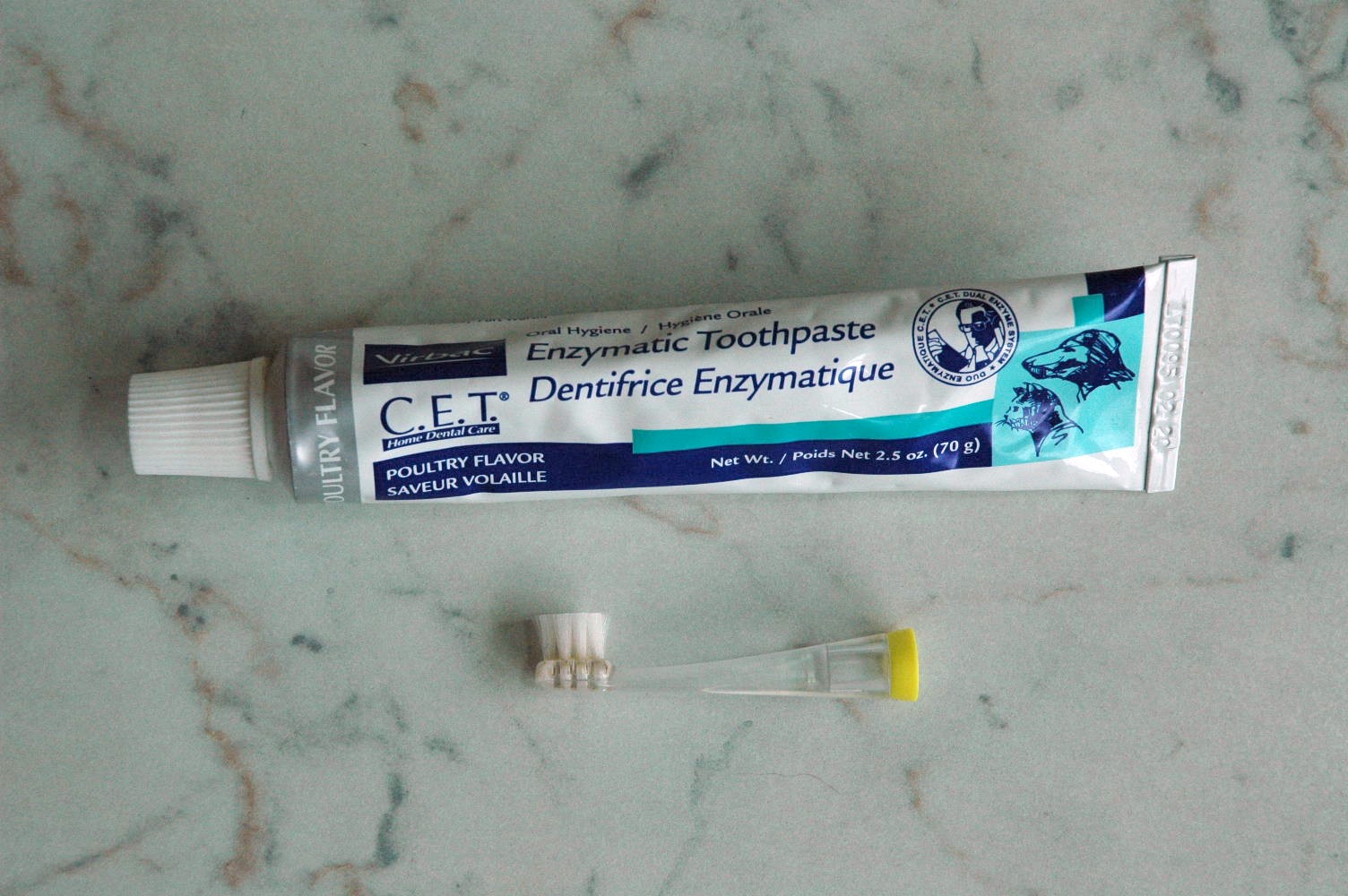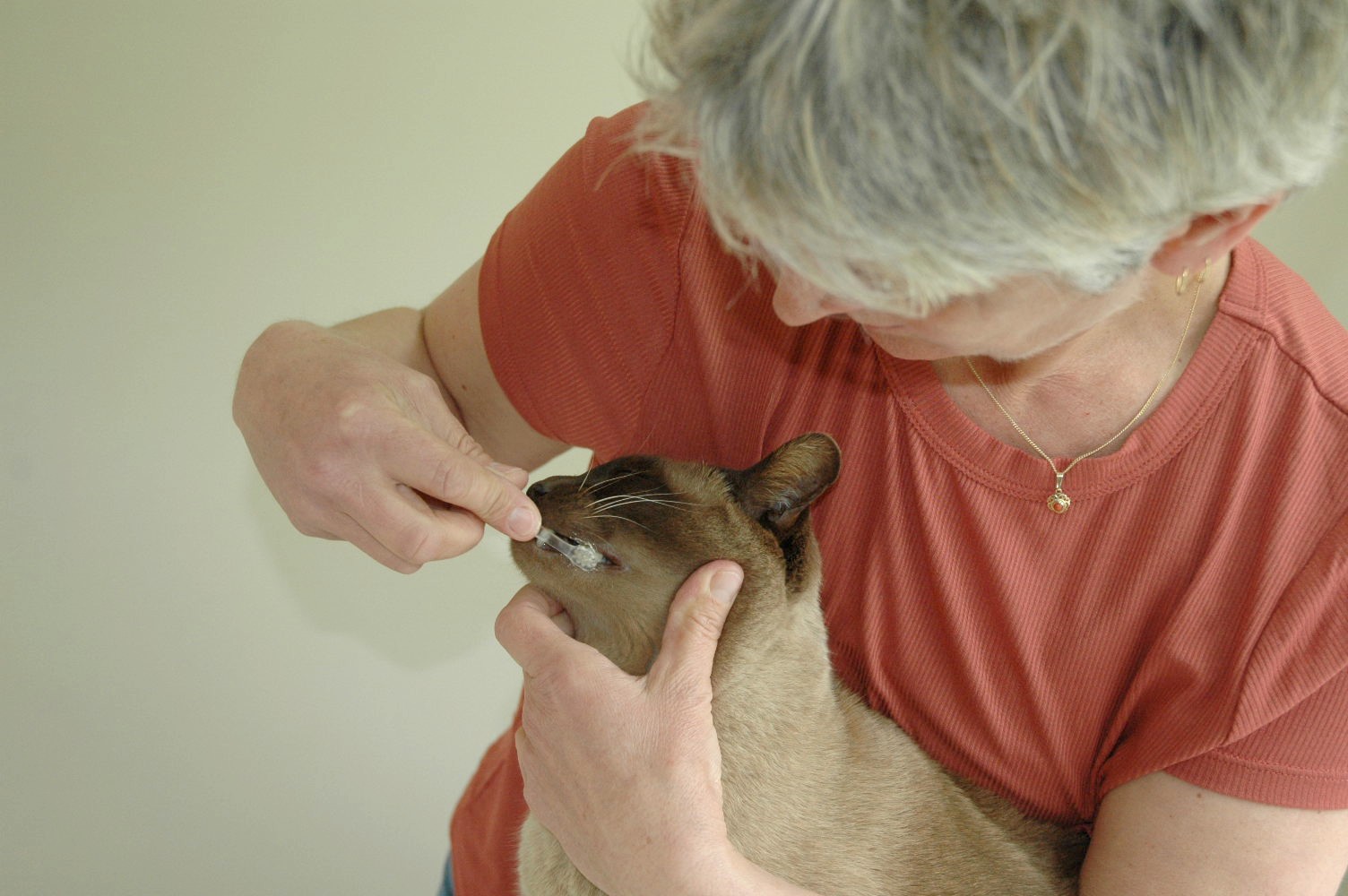How To Brush Your Cat’s Teeth
by Cat Hotel Stoney Creek, posted with permission.


Brushing your cat’s teeth is the most effective way to reduce dental plaque and maintain long-term oral health. Like humans, brushing will not only prevent plaque and tartar formation, it will also promote healthy gums and reduce bad breath. Almost three-quarters of cats over three years old could have tooth and gum disease, so it’s something to take seriously and to ask your vet about when you have your cat checked.
The gold standard is brushing your cat’s teeth for about one minute each day. Dental home care can be started in your cat at any age, but the younger he is when the procedure is started, the easier it is to adapt to the routine. Kittens usually do not take long to become accustomed to brushing, whereas older cats may need a more gradual approach. While not all cats will tolerate it, many will, and it is an excellent way to maintain oral and dental health.
Dental home care is often started after a cat has had his teeth cleaned and polished by the vet under general anaesthetic. In these cases, it is advisable to allow a few days for the mouth to heal and for inflammation to settle down before starting dental home care. Although it might ideally be done after your cat has eaten, many cats eat multiple small meals a day, and you may also prefer to give your cat some food as a reward after brushing the teeth, so timing is not critical.
Never use human toothpaste for your cat. Specific animal dental products are readily available. In New Zealand, Virbac’s specific cat toothbrushes are no longer available, though. The BabySonic electric toothbrush replacement brush heads for babies, available at the pharmacy, are almost as good, see picture below.


Use a separate toothbrush for each cat, as saliva can be a major route for cross-infection.
Use Virbac’s specific CET pet toothpaste. Most cats like the poultry flavour best (whereas the malt flavour is most popular in dogs). Letting your cat get used to tooth brushing is best done in four steps:
Step one:
Whenever your cat is happy and relaxed, gently massage his mouth, from the outside (the cheeks, really), making small circular movements, so he gets used to his mouth being touched. The movements will also stimulate the production of saliva, which helps to keep the teeth clean.
Step two:
After about a week, you can then gently put your index finger on his teeth, and start rubbing gently. Put your finger in the corner of his mouth and once he’s okay with that you can then push back a bit further. You’ll find the largest (pre) molars are actually a bit further down the mouth than where the lips end. The large premolars (especially in the upper jaw) tend to get the most tartar build-up, so are the most important to brush.
Step three:
After about another week, you can put some toothpaste on your finger and repeat the steps. You can also get a swab, wrap it around your index finger, and use that, with or without toothpaste. Some people like to use a cotton bud.
Step four:
The last step is using the toothbrush with toothpaste. Try to concentrate on the outside of the upper jaw. The lower jaw often doesn’t have much tartar build-up, unless there have been extractions in the upper jaw. When you first start to brush there may be a small amount of gum bleeding. This is common and you will find that as you brush more regularly the bleeding will stop as the gums become healthier. Brushing for one minute a day would be ideal. Do a few strokes on each side, and keep alternating. You just need a small amount of toothpaste (covering 1/4 or 1/2 of the brush): push it in the bristles a little bit, so it doesn’t flick everywhere once you start brushing. If you can, sit on the ground on your knees, feet together, with your cat between your legs, so you have good control. Do something pleasant afterwards when your cat has been good.


Link: https://icatcare.org/advice/how-to-brush-your-cats-teeth/


